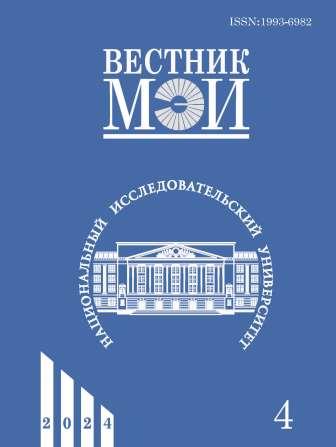Thermal Power Equipment Tubes Damage Analysis
Abstract
Ensuring the reliability of energy equipment is an important task for supplying the population with affordable electrical and thermal energy. Extensive operational experience and conducted scientific research have significantly increased the reliability of power installations, but it is still not possible to eliminate damage to their components completely. In boilers, most of the elements of the power plant are made up of various tubes. Long-term reliable operation of the equipment is only possible by localizing the cause of the damage and eliminating the factor that caused it. In some cases, determining the primary cause of an accident is difficult.
The article proposes a graphical method for analyzing the damaged tubes of boiler heating surfaces. Using a graphical method of comparing the original tube size and the damaged sample under investigation, the damage causes are localized. The comparison of cross-sections can limit and identify the factors that caused the reduction in system reliability. The following factor served as the initial premise: damage from combustion products will result in damage to the outer surface of the tube, while damage to the tube caused by the working fluid will result in damage to the inner surface of the tube.
The article presents a developed methodology for analyzing the causes of tube damage and lists the main requirements imposed on the graphical method. Based on the proposed method, an analysis of the studied samples was conducted, the damage of which was caused by various factors. The riser pipe of the low-pressure circuit, with dimensions of 108×6 mm, had changed in its inner surface due to intensive erosive impact from a two-phase flow jet. The outer surface wall of the tube remained unchanged. The tube with dimensions of 38×4 mm had damage from combustion products, caused by intensive dynamic impact of the flow jet from the leak in the adjacent tube. The flow part related to the working fluid remained undamaged. It is shown that the graphical method of analysis does not require specialized expensive equipment and can be performed directly at the station.
References
2. Маслов Р.С., Плешанов К.А., Панков В.С., Лукьянов А.В. Поиск решения проблемы эрозионно-коррозионного износа в котлах-утилизаторах // Электрические станции. 2021. № 1. С. 9—20.
3. Панков В.С., Смирнов Е.А. Методы и способы борьбы с причинами повреждений пароотводящих труб контура низкого давления котлов-утилизаторов ПГУ // Электрические станции. 2018. № 9. С. 19—23.
4. Никитин В.И., Беляков И.И., Бреус В.И. Повреждения парообразующих труб контура низкого давления барабанного котла-утилизатора ПГУ-450 Северо-Западной ТЭЦ // Теплоэнергетика. 2009. № 2. С. 27—34.
5. Федоров А.И. Анализ причин повреждения экранных труб средней радиационной части и результаты испытаний котла ПК-24 // Электрические станции. 2022. № 6. С. 2—9.
6. Баранов В.Н. Проблемы гидродинамики, маневренности, надежности энергетических котлов и их решение. Новосибирск: Изд-во НГТУ, 2013.
7. Томаров Г.В., Петров Ю.В., Шипков А.А., Довгий О.А., Семенов В.Н., Михайлов А.В. Повышение эксплуатационной эрозионно-коррозионной стойкости фасонных элементов трубной системы испарителей низкого давления котлов-утилизаторов ПГУ // Теплоэнергетика. 2008. № 2. С. 56—61.
8. Moelling D., Malloy J., Graham M., Taylor M., Fabricius A. Design Factors for Avoiding FAC Erosion in HRSG Low Pressure Evaporators // Proc. ASME Power Conf. Boston, 2013. V. 1. P. 98213.
9. Антикайн П.А. Металлы и расчет на прочность котлов и трубопроводов. М.: Энергосервис, 2001
---
Для цитирования: Плешанов К.А., Маслов Р.С., Коршунов Т.М., Лихолетова В.С. Анализ повреждения труб теплоэнергетического оборудования // Вестник МЭИ. 2024. № 4. С. 74—79. DOI: 10.24160/1993-6982-2024-4-74-79
---
Конфликт интересов: авторы заявляют об отсутствии конфликта интересов
#
1. Pleshanov K.A., Maslov R.S., Pankov V.S., Sterkhov K.V., Khokhlov D.A. Issledovanie Prichin Povrezhdeniy Isparitel'nykh Trub Kontura Nizkogo Davleniya Kotlov-utilizatorov Bol'shoy Moshchnosti. Teploenergetika. 2020;8:58––67. (in Russian).
2. Maslov R.S., Pleshanov K.A., Pankov V.S., Luk'yanov A.V. Poisk Resheniya Problemy Erozionno-korrozionnogo Iznosa v Kotlakh-utilizatorakh. Elektricheskie Stantsii. 2021;1:9—20. (in Russian).
3. Pankov V.S., Smirnov E.A. Metody i Sposoby Bor'by s Prichinami Povrezhdeniy Parootvodyashchikh Trub Kontura Nizkogo Davleniya Kotlov-utilizatorov PGU. Elektricheskie Stantsii. 2018;9:19—23. (in Russian).
4. Nikitin V.I., Belyakov I.I., Breus V.I. Povrezhdeniya Paroobrazuyushchikh Trub Kontura Nizkogo Davleniya Barabannogo Kotla-utilizatora PGU-450 Severo-Zapadnoy TETS. Teploenergetika. 2009;2:27—34. (in Russian).
5. Fedorov A.I. Analiz Prichin Povrezhdeniya Ekrannykh Trub Sredney Radiatsionnoy Chasti i Rezul'taty Ispytaniy Kotla PK-24. Elektricheskie Stantsii. 2022;6:2—9. (in Russian).
6. Baranov V.N. Problemy Gidrodinamiki, Manevrennosti, Nadezhnosti Energeticheskikh Kotlov i Ikh Reshenie. Novosibirsk: Izd-vo NGTU, 2013. (in Russian).
7. Tomarov G.V., Petrov Yu.V., Shipkov A.A., Dovgiy O.A., Semenov V.N., Mikhaylov A.V. Povyshenie Ekspluatatsionnoy Erozionno-Korrozionnoy Stoykosti Fasonnykh Elementov Trubnoy Sistemy Ispariteley Nizkogo Davleniya Kotlov-utilizatorov PGU. Teploenergetika. 2008;2:56—61. (in Russian).
8. Moelling D., Malloy J., Graham M., Taylor M., Fabricius A. Design Factors for Avoiding FAC Erosion in HRSG Low Pressure Evaporators. Proc. ASME Power Conf. Boston, 2013;1:98213.
9. Antikayn P.A. Metally i Raschet na Prochnost' Kotlov i Truboprovodov. M.: Energoservis, 2001. (in Russian)
---
For citation: Pleshanov K.A., Maslov R.S., Korshunov T.M., Likholetova V.S. Thermal Power Equipment Tubes Damage Analysis. Bulletin of MPEI. 2024;4:74—79. (in Russian). DOI: 10.24160/1993-6982-2024-4-74-79
---
Conflict of interests: the authors declare no conflict of interest




